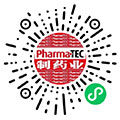无菌制备和加工过程控制13基本要求
无菌分装粉针剂生产工艺设备--粉针剂生产设备联动线工艺流程图:

01010101
The aseptic process should be clearly defined. The risks associated with the aseptic process, and any associated requirements, should be identified, assessed and appropriately controlled. The site's CCS should clearly define the acceptance criteria for these controls, requirements for monitoring and the review of their effectiveness. Methods and procedures to control these risks should be described and implemented. Accepted residual risks should be formally documented.
无菌工艺被明确定义。无菌工艺相关风险以及任何相关要求被识别、评估并适当控制。工厂的 CCS明确规定这些控制的可接受标准、监测要求及其有效性审核。描述并执行控制这些风险的方法和程序。可接受的残留风险形成正式记录。
02020202
Precautions to minimize microbial, endotoxin/pyrogenic and particle contamination should be taken, as per the site’s CCS, during the preparation of the aseptic environment, during all processing stages (including the stages before and after bulk product sterilization), and until the product is sealed in its final container. The presence of materials liable to generate particles and fibers should be minimized in cleanrooms.
在无菌环境下准备的过程中、在所有工艺阶段(包括待包装产品灭菌之前和之后的阶段)、以及直至产品封装入最终容器中,都按照工厂的 CCS 采取预防措施以最大程度减少微生物、内毒素/热原和微粒污染。在洁净室尽可能减少容易产生微粒和纤维的物料。
03030303
Where possible, the use of equipment such as RABS, isolators or other systems, should be considered in order to reduce the need for critical interventions into grade A and to minimize the risk of contamination. Robotics and automation of processes can also be considered to eliminate direct human critical interventions (e.g. dry heat tunnel, automated lyophilizer loading, sterilization in place).
在可能的情况下,考虑采用 RABS、隔离器等系统,减少对 A 级区的关键干预,并将污染风险降至最低。也可考虑机器人和工艺自动化,消除直接的人为关键干预(例如干热隧道、自动装载冻干机、在线灭菌)。
04040404
For sterile products where the final formulation cannot be filtered, the following should be considered:
对于最终制剂无法过滤的无菌产品,考虑:
i. All product and component contact equipment should be sterilized prior to use. 所有与产品和组件接触的设备在使用前进行灭菌。
ii. All raw materials or intermediates should be sterilized and aseptically added. 所有原材料或中间体灭菌并无菌添加。
iii. Bulk solutions or intermediates should be sterilized. 待包装药液或中间体灭菌。
05050505
The unwrapping, assembly and preparation of sterilized equipment, components and ancillary items with direct or indirect product contact should be treated as an aseptic process and performed in grade A with a grade B background. The filling line set-up and filling of the sterile product should be treated as an aseptic process and performed in grade A with a grade B background. Where an isolator is used, the background should be in accordance
与产品直接或间接接触的已灭菌设备、组件和辅助用品的拆包、装配和准备作为无菌工艺过程,在 B 级环境下的 A 级区域内执行。无菌产品的灌装线组装和灌装作为无菌工艺过程,在 B 级环境下的 A 级区域内执行。当使用隔离器时,背景符合规定。

06060606
Preparation and filling of sterile products such as ointments, creams, suspensions and emulsions should be performed in grade A with a grade B background when the product and components are exposed to the environment and the product is not subsequently filtered (via a sterilizing grade filter) or terminally sterilized. Where an isolator or RABS is used, the background should be in accordance.
如果产品及其组件暴露于环境下,且产品不会进行后续过滤(通过除菌级过滤器)或最终灭菌时,无菌产品(如软膏剂、霜剂、混悬剂和乳剂)的制备和灌装在 B 级环境下的 A 级内进行。如果采用隔离器或RABS,其环境符合规定。
07070707
Aseptic connections should be performed in grade A with a grade B background unless subsequently sterilized in place or conducted with intrinsic sterile connection devices that minimize any potential contamination from the immediate environment. Intrinsic sterile connection devices should be designed to mitigate risk of contamination.
无菌连接在 B 级环境下的 A 级区域内进行,除非随后经在线灭菌或使用内部无菌连接装置,从而最大程度地降低来自周围环境的潜在污染。内部无菌连接装置的设计降低污染风险。
08080808
Where an isolator is used, the background should be in accordance. Aseptic connections should be appropriately assessed and their effectiveness verified. For requirements regarding intrinsic sterile connection devices.
若采用隔离器,其环境符合规定。无菌连接进行适当评估并确认其有效性。有关内部无菌连接装置的要求。
09090909
Aseptic manipulations (including non-intrinsic sterile connection devices) should be minimized through the use of engineering design solutions such as preassembled and sterilized equipment. Whenever feasible, product contact piping and equipment should be pre-assembled, and sterilized in place.
通过使用预装配并灭菌的设备等工程设计方案,尽量减少无菌操作(包括非固有无菌连接装置)。与产品接触的管道和设备尽可能预装配并在线灭菌。
10101010
There should be an authorized list of allowed and qualified interventions, both inherent and corrective, that may occur during production. Interventions should be carefully designed to ensure that the risk of contamination of the environment, process and product is effectively minimized. The process of designing interventions should include the consideration of any impact on air-flows and critical surfaces and products. Engineering solutions should be used whenever possible to minimize incursion by operators during the intervention. Aseptic technique should be observed at all times, including the appropriate use of sterile tools for manipulations. The procedures listing the types of inherent and corrective interventions, and how to perform them, should be first evaluated via risk management and APS and be kept up to date. Non-qualified interventions should only be used in exceptional circumstances, with due consideration of the risks associated with the intervention and with the authorization of the quality unit. The details of the intervention conducted should be subject to risk assessment, recorded and fully investigated under the manufacturer’s PQS. Any non-qualified interventions should be thoroughly assessed by the quality department and considered during batch disposition.
制定一份清单并经过批准,列出生产过程中可能发生并经过批准和确认的干预措施(固有性措施和纠正性措施)。谨慎设计干预措施,确保有效降低环境、工艺和产品的污染风险。设计干预措施时考虑对气流、关键表面和产品的任何影响。尽可能使用工程方案,尽量减少操作人员在干预过程中的介入。始终遵守无菌技术,包括操作中对无菌工具的使用情况。对于列出固有性和纠正性干预措施类型以及如何执行这些干预的程序,首先通过风险管理和 APS 进行评估,并保持更新。未经确认的干预措施仅在特殊情况下使用,并适当考虑与干预措施相关的风险并经质量部门批准。所实施的干预措施的细节经过风险评估、进行记录并根据生产商的 PQS 进行全面调查。质量部门彻底评估所有未经确认的干预措施,并在批次处理过程中予以考虑。
11111111
Interventions and stoppages should be recorded in the batch record. Each line stoppage or intervention should be sufficiently documented in batch records with the associated time, duration of the event, and operators involved.
干预和停工记录在批记录中。每次生产线的停工或干预都在批记录中充分记录,包括相关的时间、持续时间和操作人员。
12121212
The duration of each aspect of aseptic preparation and processing should be minimized and limited to a defined and validated maximum time, including:无菌准备和加工每个方面的持续时间尽量减少,并且限定到已确定并经过验证的最长时间内,包括:
i. The holding time between equipment, component, and container cleaning, drying and sterilization. 设备、组件和容器清洁、干燥和灭菌之间的保持时间。
The holding time for sterilized equipment, components, and containers before use and during filling/assembly. 已灭菌设备、组分和容器在使用前和灌装/装配过程中的保持时间。
iii. The holding time for a decontaminated environment, such as the RABS or isolator before use. 已净化环境(例如 RABS 或隔离器)在使用前的保持时间。
iv. The time between the start of the preparation of a product and its sterilization or filtration through a microorganism-retaining filter (if applicable), through to the end of the aseptic filling process. There should be a maximum permissible time for each product that takes into account its composition and the prescribed method of storage. 产品制备、产品灭菌或通过除菌过滤器过滤(如适用)、完成无菌灌装过程三者的时间间隔。基于产品的组分和规定的贮存方法,每种产品都设置最大允许在线保持时间。
v. The holding time for sterilized product prior to filling. 已灭菌产品在灌装前的保持时间。
vi. The aseptic processing time. 无菌工艺时间。
vii. The filling time. 灌装时间。
13131313
Aseptic operations (including APS) should be observed on a regular basis by personnel with specific expertise in aseptic processing to verify the correct performance of operations including operator behavior in the cleanroom and address inappropriate practices if detected. 无菌操作(包括 APS)由具备无菌工艺专业知识的人员定期观察,核实操作(包括操作人员在洁净室内的行为)的正确性,并在发现不当操作时予以纠正。

撰稿人 | 制药人职场加油站
责任编辑 | 胡静
审核人 | 何发
邵丽竹
何发
热点文章
-
几种典型制药工艺流程图分析
2025-10-11
-
阿司匹林合成工艺及装置改进
2025-10-21
-
qPCR技术:药典 2025 版下生物制品2小时无菌放行方案
2025-09-10
-
辐照辐照灭菌技术在制药行业中的应用灭菌技术在制药行业中的应用
2025-10-11
-
中药颗粒剂生产中的现代化工艺改造
2025-11-04
-
2025年50家头部药企的竞争格局与核心趋势分析
2025-10-21
-
浅谈非最终灭菌产品制剂车间无菌工艺模拟试验中的要点与设计
2025-11-18
-
基于CFD仿真技术的灌装机充氮装置设计优化
本文以某制药产线的灌装机设备为研究对象,采用计算流体动力学(CFD)仿真技术对充氮装置的充氮性能进行分析,并结合分析结果对氮幕结构进行了优化设计。随后,针对优化方案进行性能仿真验证,结果显示优化后的顶空残氧量降低至0.252%。为了进一步验证优化方案的实际效果,将优化方案应用于实际产线进行性能测试,测得的顶空残氧量为0.68%,这一结果满足了小于1%的要求,表明其充氮保护性能已达到国际先进水平。
作者:王志刚、刘依宽、刘佳鑫
-
药品密封性检测 :用户需求与优化
-
可控冻融系统在生物原液上的应用
-
人用疫苗生产数字化转型
-
药包材生产质量管理的进阶策略
-
药厂洁净区域风量和压差的控制策略













评论
加载更多